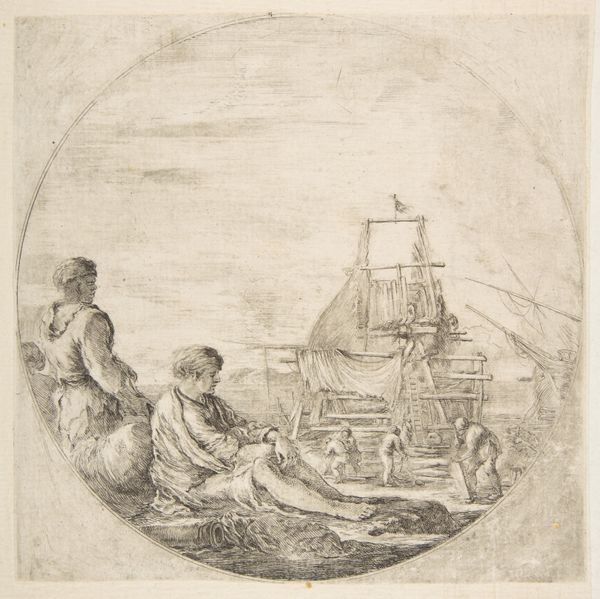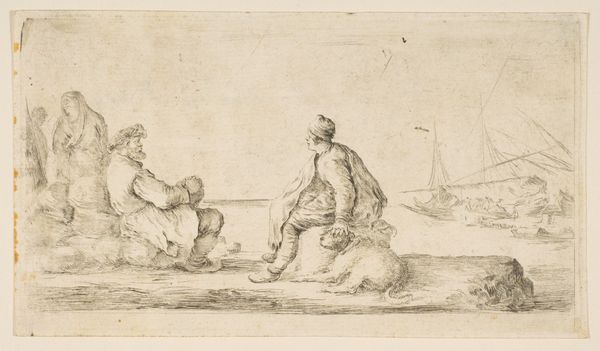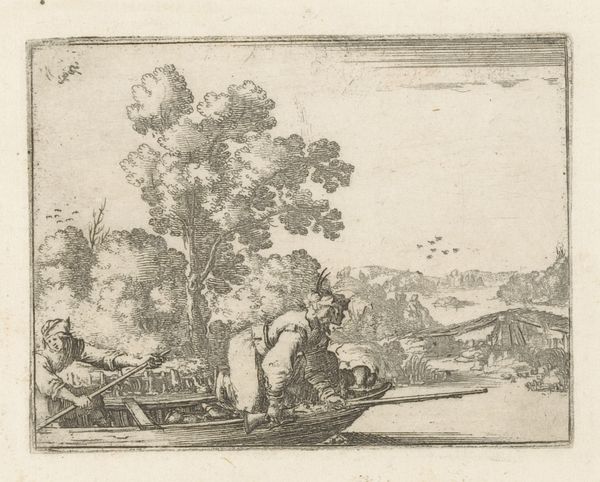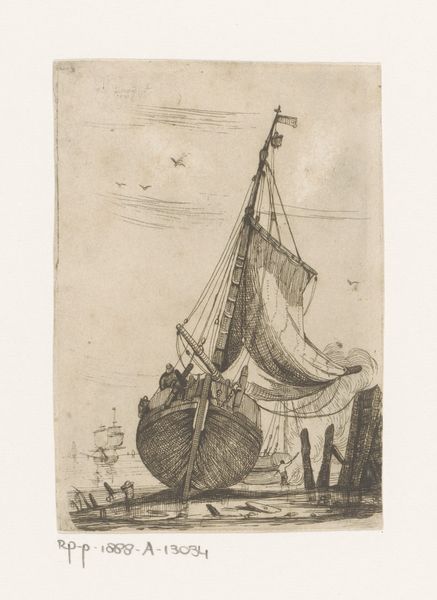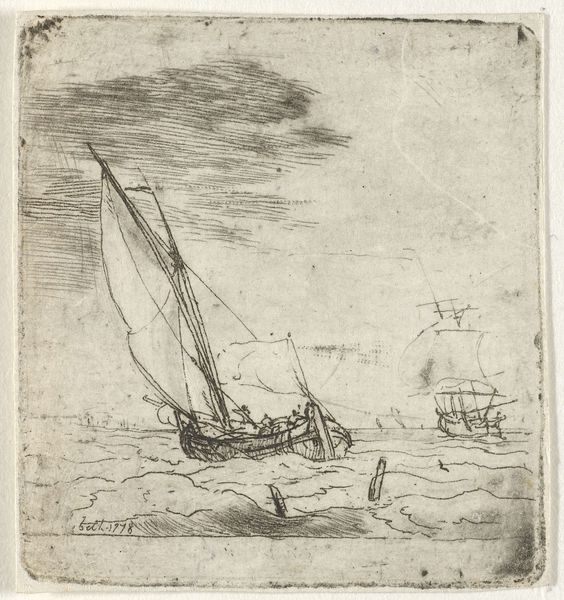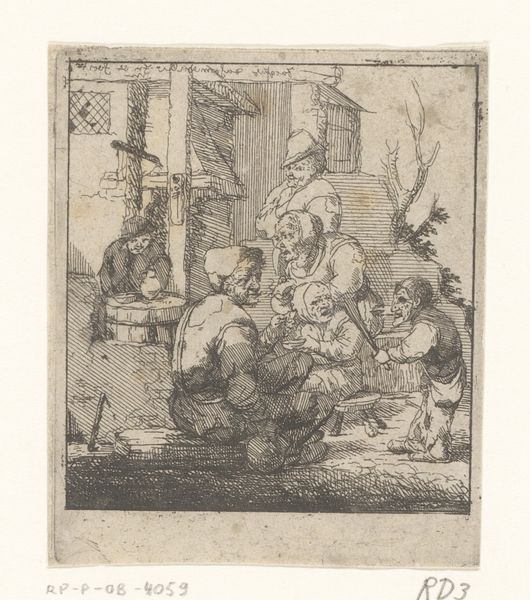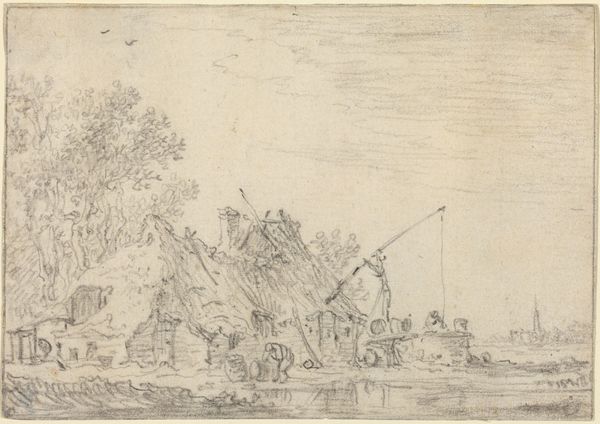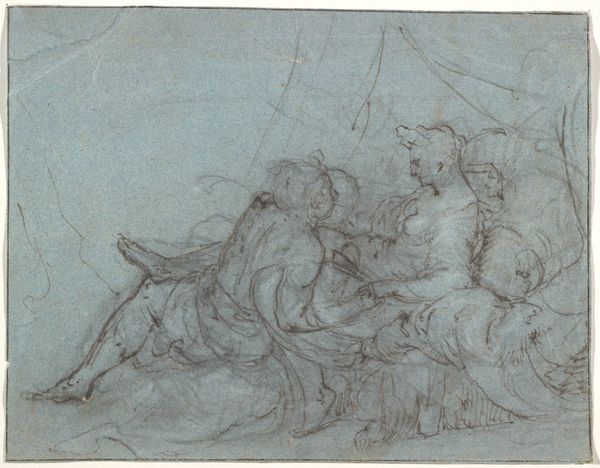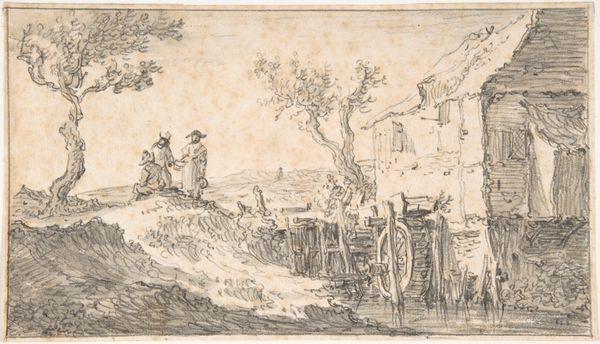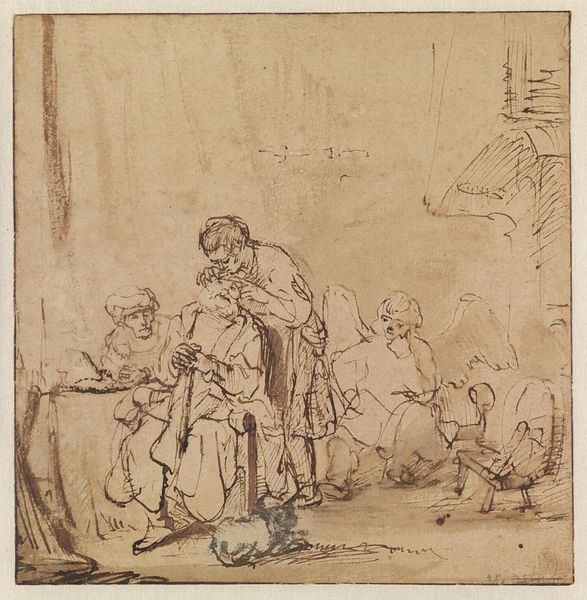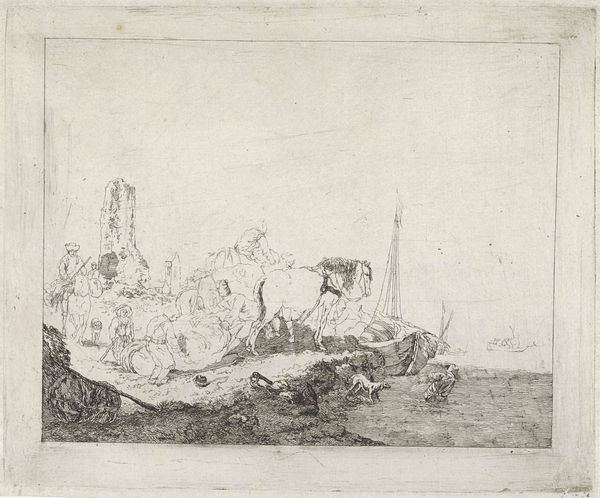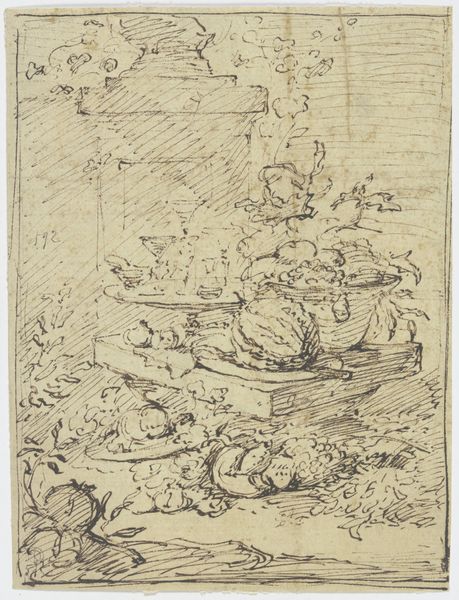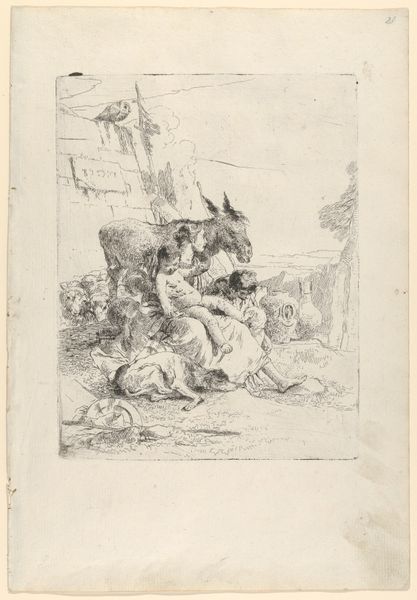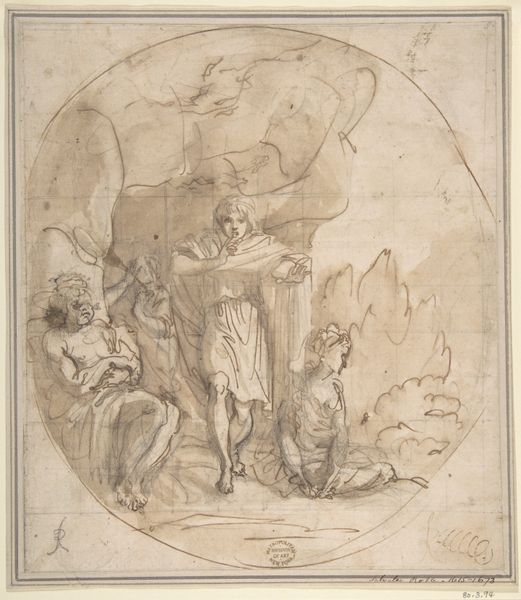
A Black sailor standing to left, in profile to the right, a White sailor seated in center with legs outstretched, a ship being repaired to right in the background 1658 - 1663
0:00
0:00
drawing, print, etching, engraving
#
portrait
#
drawing
#
ship
# print
#
etching
#
landscape
#
genre-painting
#
italian-renaissance
#
engraving
#
profile
Dimensions: Sheet: 7 11/16 x 7 3/8 in. (19.6 x 18.8 cm)
Copyright: Public Domain
Editor: This is "A Black sailor standing to left, in profile to the right, a White sailor seated in center with legs outstretched, a ship being repaired to right in the background," an etching by Stefano della Bella from 1658 to 1663, currently held at the Met. The monochromatic and circular format is very striking; it almost resembles a coin or a historical artifact, while also leaving much open to interpretation. What strikes you when looking at the arrangement of elements in the etching? Curator: Consider first the organization of the image. The composition is notably divided; the active ship repair to the right contrasting with the seated figures on the left. The use of line in the foreground figures versus the background activity creates depth. It would be productive to analyse what meaning can be generated through the careful consideration of its elements, structure, and their relation. Do you agree that the formal qualities such as the monochrome medium influences our interpretation of narrative? Editor: That's interesting! The contrasting levels of action definitely jump out now that you mention it. I also find the implied gazes intriguing, since it almost feels like it invites the viewer to form their own opinions. I wonder if the monochromatic palette limits emotional resonance or strengthens other compositional elements. Curator: Indeed, the reduction to essential visual components – line, form, composition, light – invites contemplation on the work's fundamental structure. Do you find the composition conveys a visual tension, and if so, how does it enhance the reading of narrative elements? Editor: Definitely! The arrangement definitely evokes an unsettling feeling, heightened by the stark contrast of activity and idleness and use of minimal medium! Curator: Precisely. By acknowledging these formal relationships, we access layers of potential understanding that moves past purely descriptive understanding, allowing for richer theoretical engagements. Editor: I see how deconstructing the image using a formalist lens opens up possibilities within the visual arrangement itself! I feel much better prepared to further interrogate Renaissance period prints now.
Comments
No comments
Be the first to comment and join the conversation on the ultimate creative platform.
